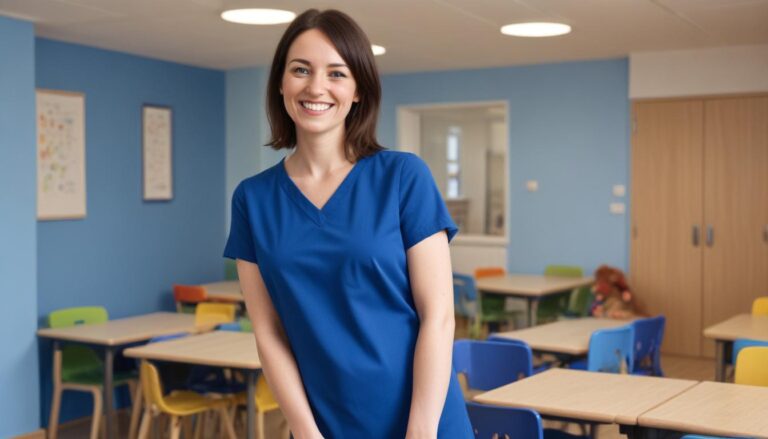This guide will help you answer 2.2. Identify how technology toys and activities support the following development in the young child: • physical • intellectual • language.
Technology toys can support physical development in young children through interactive play. These toys often engage both fine and gross motor skills. Children might press buttons, swipe screens, or move interactive pieces.
Examples include:
- Touchscreen Devices: Apps designed for toddlers may require tapping or swiping. This helps with hand-eye coordination.
- Toy Robots: Some robots encourage children to move around and mimic actions. This can improve their balance and coordination.
- Dance Mats: These encourage children to follow rhythms and move their bodies. It helps with coordination and physical activity.
Using technology toys to promote physical development involves not just the direct use of these toys but the environment they create. Stimulating environments encourage children to interact actively.
Creating a Balance
Even though technology toys are engaging, traditional physical play should complement them. Real-world interactions, like climbing, jumping, and running, benefit overall physical skills. Ensure playtime has a mix of technology-based and traditional physical activities.
Tips for physical development through play:
- Limit screen time: Long periods should be avoided for very young children.
- Encourage movement: Incorporate toys that require movement.
- Engage in group play: This can involve sporting activities or simple group games, fostering both motor skills and social interaction.
Intellectual Development Through Technology Activities
Technology toys can stimulate intellectual development by challenging the brain. Cognitive skills like problem-solving, memory, and understanding cause and effect relationships are enhanced.
Examples include:
- Educational Apps: Many apps teach numbers, alphabet, shapes, or colours. Interactive quizzes and games help retention and recall.
- Puzzle Games: Digital puzzles encourage children to piece together information logically.
- Coding Toys: Entry-level coding toys enhance logical thinking and sequencing skills.
Interactive technology allows for personalised learning experiences. Apps can adapt to a child’s pace, offering tailored challenges enhancing intellectual growth.
Promoting Engagement
Engaging young children intellectually through technology requires a balance of structure and freedom. Encouraging curiosity and questioning leads to deeper learning experiences.
Strategies to support intellectual development:
- Encourage exploration: Let children choose the games they prefer.
- Ask open-ended questions: Stimulate thinking by discussing the games played.
- Engage in joint play: Join in digital play to discuss what’s happening and encourage verbal interaction.
Language Development with Technology Toys
Technology toys that support language development expose children to new vocabulary, sounds, and even languages. Sounds and words through stories, songs, or character interactions teach linguistic skills.
Examples include:
- Interactive Storybooks: These stimulate listening and verbal skills. They introduce narratives and new vocabulary.
- Language Apps: Designed for beginners, these encourage learning new languages or enhancing vocabulary within the child’s native language.
- Talking Toys: Toys designed to respond to the child’s actions, offering language input in response to interactions.
Encouraging Language Skills
Engaging with technology toys should be an active experience for language development. Use features that allow children to practice speaking or listening attentively.
Ways to support language:
- Encourage active participation: Ask children to repeat words or phrases.
- Reinforce learning: Relate activities back to daily conversations.
- Provide context: Encourage using learned words in real-life situations.
Screen Time and Overall Development
The slight overuse of technology toys can affect development. It’s important to create a balance between virtual and real-world play. Ensure children engage in diverse play experiences to avoid reliance on screens.
Recommendations for balanced screen time:
- Set daily limits: Implement clear guidelines on screen durations.
- Supervise Usage: Keep track of what content children engage with.
- Lead by Example: Demonstrate a balanced technology use, setting a positive model.
Supporting Parents and Practitioners
Supporting children in development through technology involves both parents and practitioners. Encourage discussions about app choices, safety, and the positive use of technology toys.
Guidance for parents and practitioners:
- Stay informed: Keep updated on educational technologies.
- Regular Communication: Keep open lines with parents regarding technology use.
- Feedback Loop: Encourage children to share what they’ve learned with adults.
Conclusion – A Balanced Approach
Incorporating technology toys and activities in child development provides benefits across physical, intellectual, and language domains. Balance is key. Combining traditional and digital play offers rich, diverse experiences vital for holistic growth in the early years.
Monitor and adjust play activities to meet the needs of each child. Engage with both digital and traditional methods to ensure various aspects of a child’s skills and abilities are nurtured.
Subscribe to Newsletter
Get the latest news and updates from Care Learning and be first to know about our free courses when they launch.




